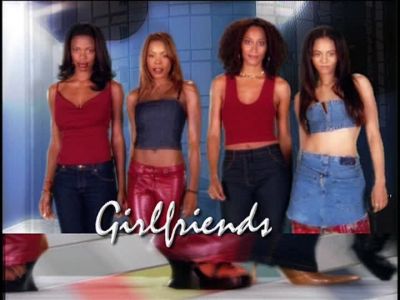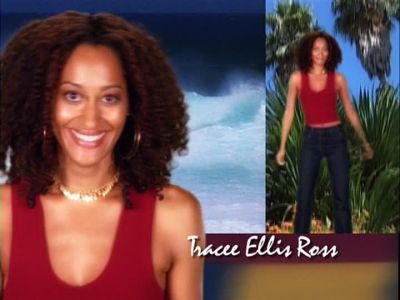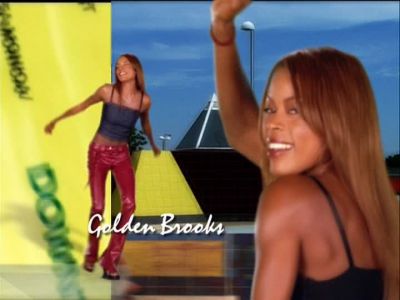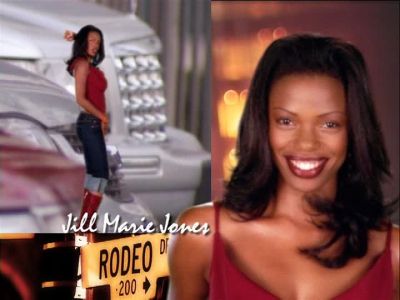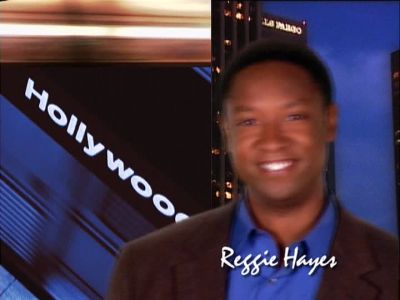Difference between revisions of "BUI301F2022/Comedy and Identity Discussion"
From Screenpedia
Jump to navigationJump to search (added identity screenings) |
(added ali wong) |
||
| (12 intermediate revisions by the same user not shown) | |||
| Line 4: | Line 4: | ||
**''Richard Pryor: Live on the Sunset Strip'' | **''Richard Pryor: Live on the Sunset Strip'' | ||
**''Girlfriends'' | **''Girlfriends'' | ||
| + | **Jeff Foxworthy, ''The Good Old Days'' | ||
| + | **Jim Gaffigan, ''Noble Ape'' | ||
*Ethnicity/nationality | *Ethnicity/nationality | ||
**''Always Be My Maybe'' | **''Always Be My Maybe'' | ||
**''Reservation Dogs'' | **''Reservation Dogs'' | ||
**''Awkwafina Is Nora from Queens'' | **''Awkwafina Is Nora from Queens'' | ||
| + | *Gender | ||
| + | **Sasha ([[w:Ali Wong|Ali Wong]]) in ''Always Be My Maybe'' | ||
| + | **Nora ([[W:Awkwafina|Awkwafina]]) in ''Awkwafina Is Nora from Queens'' | ||
| + | **[[W:Penny (The Big Bang Theory)|Penny]] ([[W:Kaley Cuoco|Kaley Cuoco]]) and Dr. Stephanie Barnett ([[w:Sara Rue|Sara Rue]]) in ''The Big Bang Theory'' | ||
| + | **Julia ([[W:Dixie Carter|Dixie Carter]]), Mary Jo ([[w:Annie Potts|Annie Potts]]), Allison ([[w:Julia Duffy|Julia Duffy]]), Carlene ([[w:Jan Hooks|Jan Hooks]]), Bernice ([[w:Alice Ghostley|Alice Ghostley]]) in ''Designing Women'' | ||
| + | **Toni ([[W:Jill Marie Jones|Jill Marie Jones]]), Maya ([[W:Golden Brooks|Golden Brooks]]), Joan ([[W:Tracee Ellis Ross|Tracee Ellis Ross]]), Lynn ([[W:Persia White|Persia White]]) in ''Girlfriends'' | ||
| + | **Lucy ([[W:Lucille Ball|Lucille Ball]]) in ''I Love Lucy'' | ||
| + | **Eve ([[W:Barbara Stanwyck|Barbara Stanwyck]]) in ''The Lady Eve'' | ||
| + | **[[w:Jennifer Walters (Marvel Cinematic Universe)|Jennifer/She-Hulk]] ([[w:Tatiana Maslany|Tatiana Maslany]] in in ''She-Hulk: Attorney at Law'' | ||
| + | **Max ([[W:Kat Dennings|Kat Dennings]]) and Caroline ([[W:Beth Behrs|Beth Behrs]]) in ''2 Broke Girls'' | ||
*Religion | *Religion | ||
**''Curb Your Enthusiasm'' | **''Curb Your Enthusiasm'' | ||
| Line 13: | Line 25: | ||
**''The Lady Eve'' | **''The Lady Eve'' | ||
**''2 Broke Girls'' | **''2 Broke Girls'' | ||
| − | |||
| − | |||
<!-- | <!-- | ||
<gallery mode="packed" heights="200px"> | <gallery mode="packed" heights="200px"> | ||
| Line 30: | Line 40: | ||
</gallery> | </gallery> | ||
--> | --> | ||
| + | |||
| + | == Herman Gray and Michael Omi & Howard Winant on the study of race and ethnicity== | ||
| + | *Sociologists Michael Omi and Howard Winant reject the idea of racial '''essentialism''' and propose an approach based instead on a '''racial formation'''. | ||
| + | *Herman Gray identifies three African-American discourses in TV. | ||
| + | *#The '''assimilationist''' category, including ''Designing Women''. | ||
| + | *#The '''pluralist''' category, including ''Girlfriends''. | ||
| + | *#The '''multiculturalist''' category. | ||
| + | |||
| + | ==Beretta Smith-Shomade== | ||
| + | Beretta Smith-Shomade (pronounced "show-ma-day") examines "four intertwined elements in [1990s] television comedy that define and give meaning to Black women's representation there: work roles, characterization, class, and identity" (48). | ||
| + | |||
| + | *Work and class. When Joan snoops in Marcus's apartment, she notes music by [[w:John Coltrane|John Coltrane]] and [[W:Macy Gray|Macy Gray]] and a novel by [[W:Walter Mosley|Walter Mosley]]. What do these signifiers tell you about Marcus's social class? Also, elsewhere in the episode there are allusions to the Tuskegee Syphilis Study, Nelson Mandela, and Rainbow/PUSH. Each is a significant reference within black culture. | ||
| + | <!--**The items in Marcus' apartment allude that he is well-off, cultured, and educated. They represent a higher class because many working class individuals may not be interested in those matters. --> | ||
| + | **The [[w:Tuskegee Syphilis Study|Tuskegee Syphilis Study]] (here in Alabama!) subjected many black men to the disease without proper treatment or information before the experiment. This contributed to a growing mistrust between the black community and medical professionals. | ||
| + | **[[w:Nelson Mandela|Nelson Mandela]] was jailed for 27 years in South Africa for fighting to end apartheid. | ||
| + | **[[w:Rainbow/PUSH|Rainbow/PUSH]] is a non-profit intended to empower black individuals within government positions. PUSH stands for People United to Serve Humanity. | ||
| + | *Identity | ||
| + | **Language. How does the way they speak define black characters? What differences do you hear in the ''Girlfriends'' characters' speech? | ||
| + | **Skin shade. How does skin shade define black characters? Describe how this episode directly addresses this issue in the black community. Is there a moral to this story? | ||
| + | **Hair. How do hair styles define black characters? What hair-style differences do you see in the ''Girlfriends'' characters and what do they tell you about Toni, Maya, Joan, and Lynn? | ||
| + | |||
| + | *Characterization (i.e., conventional roles and stereotypes). Does ''Girlfriends'' rely on African-American stereotypes? E.g., "mammy," "sapphire," "tragic mulatto," etc. | ||
| + | |||
| + | ==Casts== | ||
| + | ===''Girlfriends''=== | ||
| + | <gallery mode="packed" heights=200px> | ||
| + | File:Girlfriends20001002qq00 01 26qq00017.jpg|alt=Screenshot from Girlfriends.|''Girlfriends'' credits. From left: Toni, Maya, Joan, & Lynn. | ||
| + | File:Girlfriends20001002qq00 01 30qq00020.jpg|alt=Screenshot from Girlfriends.|Joan. | ||
| + | File:Girlfriends20001002qq00 01 31qq00022.jpg|alt=Screenshot from Girlfriends.|Maya. | ||
| + | File:Girlfriends20001002qq00 01 36qq00007.jpg|alt=Screenshot from Girlfriends.|Lynn. | ||
| + | File:Girlfriends20001002qq00 01 39qq00010.jpg|alt=Screenshot from Girlfriends.|Toni. | ||
| + | File:Girlfriends20001002qq00 01 41qq00034.jpg|alt=Screenshot from Girlfriends.|William. | ||
| + | </gallery> | ||
| + | |||
| + | *William Dent ([[Wikipedia:Reggie Hayes|Reggie Hayes]]) | ||
| + | *Toni Childs ([[Wikipedia:Jill Marie Jones|Jill Marie Jones]]) | ||
| + | *Maya Wilkes ([[Wikipedia:Golden Brooks|Golden Brooks]]) | ||
| + | *Joan Clayton ([[Wikipedia:Tracee Ellis Ross|Tracee Ellis Ross]]) | ||
| + | *Lynn Searcy ([[Wikipedia:Persia White|Persia White]]) | ||
| + | *Marcus Stokes ([[Wikipedia:Rodney Van Johnson|Rodney Van Johnson]]) | ||
== Texts & resources == | == Texts & resources == | ||
*Beretta E. Smith-Shomade, "Laughing Out Loud: Negras Negotiating Situation Comedy," in ''Shaded Lives: African-American Women and Television'' (New Brunswick, NJ: Rutgers University Press, 2002), 24-68. | *Beretta E. Smith-Shomade, "Laughing Out Loud: Negras Negotiating Situation Comedy," in ''Shaded Lives: African-American Women and Television'' (New Brunswick, NJ: Rutgers University Press, 2002), 24-68. | ||
*Jeremy G. Butler, "Redesigning Discourse: Feminism, the Sitcom and Designing Women," Journal of Film and Video, 45, no. 1; pp. 13-26. [https://tvcrit.com/jbutler/research/RedesigningDiscourse.pdf Online version]. | *Jeremy G. Butler, "Redesigning Discourse: Feminism, the Sitcom and Designing Women," Journal of Film and Video, 45, no. 1; pp. 13-26. [https://tvcrit.com/jbutler/research/RedesigningDiscourse.pdf Online version]. | ||
| + | *[http://en.wikipedia.org/wiki/User:Jeremy_Butler/Books/Discourse_and_Identity:_Race Wikipedia book: ''Girlfriends'' allusions] | ||
| + | *[https://tvcrit.org/Classes/Jbutler/T311/Girlfriends/ ''Girlfriends'' illustrations] | ||
| + | *"Infanity: Girlfriends," tour of the ''Girlfriends'' set by Persia White, [https://tvcrit.org/EO/DV/White_Persia_Girlfriends.php local copy] | ||
[[Category:BUI301F2022]] | [[Category:BUI301F2022]] | ||
[[Category:BUI301F2022 Discussion]] | [[Category:BUI301F2022 Discussion]] | ||
Latest revision as of 19:29, 10 November 2022
- Race
- The Bernie Mac Show
- Richard Pryor: Live on the Sunset Strip
- Girlfriends
- Jeff Foxworthy, The Good Old Days
- Jim Gaffigan, Noble Ape
- Ethnicity/nationality
- Always Be My Maybe
- Reservation Dogs
- Awkwafina Is Nora from Queens
- Gender
- Sasha (Ali Wong) in Always Be My Maybe
- Nora (Awkwafina) in Awkwafina Is Nora from Queens
- Penny (Kaley Cuoco) and Dr. Stephanie Barnett (Sara Rue) in The Big Bang Theory
- Julia (Dixie Carter), Mary Jo (Annie Potts), Allison (Julia Duffy), Carlene (Jan Hooks), Bernice (Alice Ghostley) in Designing Women
- Toni (Jill Marie Jones), Maya (Golden Brooks), Joan (Tracee Ellis Ross), Lynn (Persia White) in Girlfriends
- Lucy (Lucille Ball) in I Love Lucy
- Eve (Barbara Stanwyck) in The Lady Eve
- Jennifer/She-Hulk (Tatiana Maslany in in She-Hulk: Attorney at Law
- Max (Kat Dennings) and Caroline (Beth Behrs) in 2 Broke Girls
- Religion
- Curb Your Enthusiasm
- Class
- The Lady Eve
- 2 Broke Girls
Herman Gray and Michael Omi & Howard Winant on the study of race and ethnicity
- Sociologists Michael Omi and Howard Winant reject the idea of racial essentialism and propose an approach based instead on a racial formation.
- Herman Gray identifies three African-American discourses in TV.
- The assimilationist category, including Designing Women.
- The pluralist category, including Girlfriends.
- The multiculturalist category.
Beretta Smith-Shomade
Beretta Smith-Shomade (pronounced "show-ma-day") examines "four intertwined elements in [1990s] television comedy that define and give meaning to Black women's representation there: work roles, characterization, class, and identity" (48).
- Work and class. When Joan snoops in Marcus's apartment, she notes music by John Coltrane and Macy Gray and a novel by Walter Mosley. What do these signifiers tell you about Marcus's social class? Also, elsewhere in the episode there are allusions to the Tuskegee Syphilis Study, Nelson Mandela, and Rainbow/PUSH. Each is a significant reference within black culture.
- The Tuskegee Syphilis Study (here in Alabama!) subjected many black men to the disease without proper treatment or information before the experiment. This contributed to a growing mistrust between the black community and medical professionals.
- Nelson Mandela was jailed for 27 years in South Africa for fighting to end apartheid.
- Rainbow/PUSH is a non-profit intended to empower black individuals within government positions. PUSH stands for People United to Serve Humanity.
- Identity
- Language. How does the way they speak define black characters? What differences do you hear in the Girlfriends characters' speech?
- Skin shade. How does skin shade define black characters? Describe how this episode directly addresses this issue in the black community. Is there a moral to this story?
- Hair. How do hair styles define black characters? What hair-style differences do you see in the Girlfriends characters and what do they tell you about Toni, Maya, Joan, and Lynn?
- Characterization (i.e., conventional roles and stereotypes). Does Girlfriends rely on African-American stereotypes? E.g., "mammy," "sapphire," "tragic mulatto," etc.
Casts
Girlfriends
- William Dent (Reggie Hayes)
- Toni Childs (Jill Marie Jones)
- Maya Wilkes (Golden Brooks)
- Joan Clayton (Tracee Ellis Ross)
- Lynn Searcy (Persia White)
- Marcus Stokes (Rodney Van Johnson)
Texts & resources
- Beretta E. Smith-Shomade, "Laughing Out Loud: Negras Negotiating Situation Comedy," in Shaded Lives: African-American Women and Television (New Brunswick, NJ: Rutgers University Press, 2002), 24-68.
- Jeremy G. Butler, "Redesigning Discourse: Feminism, the Sitcom and Designing Women," Journal of Film and Video, 45, no. 1; pp. 13-26. Online version.
- Wikipedia book: Girlfriends allusions
- Girlfriends illustrations
- "Infanity: Girlfriends," tour of the Girlfriends set by Persia White, local copy
